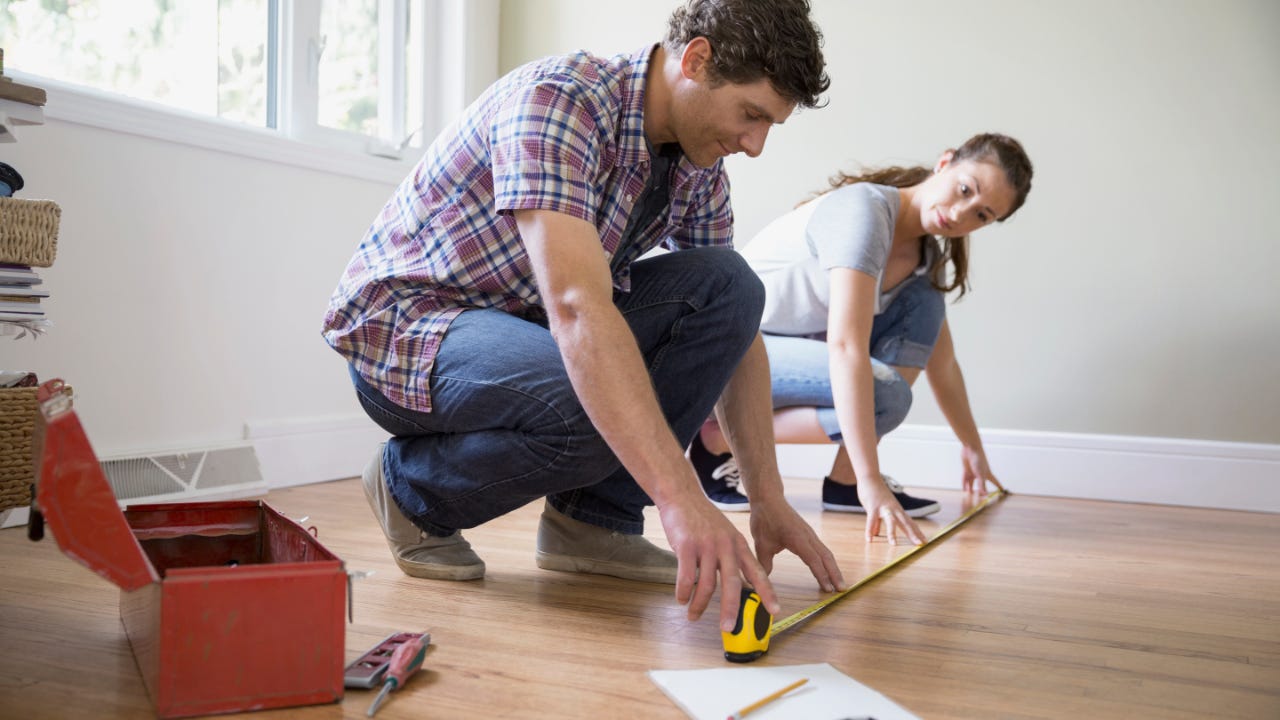How to calculate the square footage of a home (and why it’s important)

The Bankrate promise
At Bankrate we strive to help you make smarter financial decisions. While we adhere to strict , this post may contain references to products from our partners. Here's an explanation for .
When you buy a new home, thinking about how to measure its square footage probably isn’t top of mind. And while it may seem like an inconsequential metric, it’s one of the most important factors that determine a property’s value.
“If you mismeasure a property, it’s a domino effect — it’s going to throw the whole value off,” says Marlon Day, senior director of Quest Valuation & Advisors in Atlanta.
Why square footage is important
There are plenty of reasons you might want to know how to calculate the square feet of a house, whether you’re looking to sell a property, dispute a high tax assessment or renovate to add more space.
If you’re preparing to list your home for sale, determining the property’s exact size is a crucial factor when setting your asking price. “For a home appraisal, we’re going to compare it to comparables or ‘comps,’” says Day, who looks for homes of similar size in the immediate area. An inaccurate square footage measurement could potentially result in an inaccurate appraisal price.
Square footage (often abbreviated as SF or SQFT) also matters in real estate deals that involve a mortgage, for similar reasons. The lender will want that info to verify what the property is worth.
However, knowing your home’s square footage can come in handy in other ways as well. For instance, if you decide to finish a previously unused part of your house — say, a basement or attic space — you may need to provide the square footage to obtain a building permit.
Likewise, if your county or municipality assesses higher taxes than what you think you should owe, confirming the square footage can be a point in your favor toward getting the property taxes reduced.
How to calculate the square footage of a house
When preparing to measure the square footage of a home, be it a house, condo, or townhouse, start with a few simple supplies:
- Paper and pencil
- Calculator
- Measuring tape and/or laser measuring tool
If the property is a perfect rectangle, simply measure the length and width and multiply those two numbers together. For example, if your one-story house is 60 feet wide by 40 feet long, then your property is 2,400 square feet (60 x 40 = 2,400).
However, most properties have more complex floor plans. When this is the case, it’s helpful to follow these simple steps to measure square footage.
- Draw a rough sketch of your entire space, labeling all of the rooms you need to measure. Include hallways and vestibules as their own “room.”
- Measure the length and width, in feet, of each room. Then, multiply the length by the width to calculate that room’s square footage. For example: If a bedroom is 12 feet by 20 feet, it is 240 square feet (12 x 20 = 240). For each room, write the total square footage in the corresponding space on your sketch.
- Once each room is measured, add up all the measurements to determine your home’s total square footage.
What to leave out
A good rule of thumb to ensure you’re taking proper measurements is to exclude space you can’t walk on or live in. These types of spaces do not count as “gross living area.”
“Someone might think, ‘If I get the measurement of my first floor and I have a two-story house, I just multiply that by two,’” Day says. However, if that first floor includes a two-story foyer, you can’t count the non-usable space.
Basements and garages, even if they are finished, don’t generally count toward total square footage. Basements are typically excluded because they are built below grade, meaning below ground level. If your state does allow basements to be included in the total square footage of a home, though, you’ll likely need an ingress and egress, or a safe way to enter and exit the basement to the outside.
Finished attic spaces — with some regulations, including ceiling heights — can count toward the total square footage of your home. If you are planning to sell your home, work with a real estate agent to craft a listing that accurately reflects your property.
When in doubt, ask the pros
If calculating the square feet of your particular property feels overwhelming, consider hiring a professional appraiser to do it. The average appraisal cost for a single-family home typically runs about $350. A condo appraisal fee is generally between $300 and $500, and multi-family home appraisals can run anywhere from $600 to $1,500.
While two different professional appraisers could evaluate the same home and come up with slightly different square footage figures, they do all aim for scientific accuracy. “We’re always shooting for somewhere between 1 to 3 percent variance,” Day says.
FAQs
-
Every appraiser has their own preferred method of calculating the square footage of a home. Some use a tape measure to carefully take the dimensions of each room, whereas others use a laser device that eliminates manual measuring. For difficult-to-measure spaces, experienced pros may just eyeball it. As a result, different appraisers will often come up with a slightly different square footage of the same home.
-
There are lots of reliable square footage calculators online, including examples from Calculator Soup, the Calculator Site or Calculator.net. Many can calculate price per square foot as well.
-
To calculate the square footage of a roof, start by measuring the length and width of every roof surface, including dormers. Then, multiply the length and width of each rectangular section of roof to find the area. If there are triangular sections of roof, calculate the area by multiplying the length of the triangle’s longest side by its height, and divide by two. The last step is to add up the area of all roof planes to get the total square footage of the roof.
-
You can calculate the square footage of a triangular room by measuring the base of the triangle, which is the length of the longest wall. Then, measure the height to the top of the triangle. Multiply the base and height together, and divide by two to get the square footage of the room.
-
Closets are often included in the square footage of a home, but not always. Any space inside a home that has walls, a floor, a ceiling and heat are usually counted toward the overall square footage. However, if there are closets that don’t meet the requirements, like in an unheated, unfinished basement, they probably would not be counted.
Related Articles



